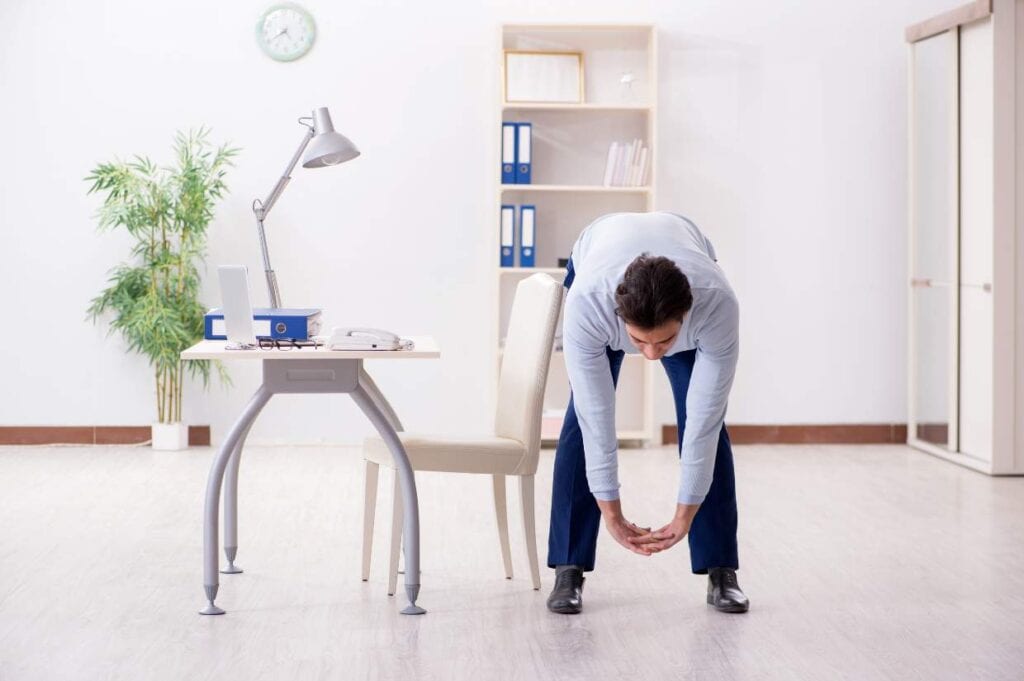We all know that daily movement is a necessity for a healthy lifestyle, but what exactly does that entail? How much physical activity should you do daily? More importantly, how can you fit it in when you’re so busy?

Most days, I’m so busy with work that I don’t have enough time to exercise, and I know a lot of you can relate to that. With such a jam-packed schedule juggling work, kids and the household, I often have to make a conscious effort to move around more and get my heart rate pumping.
Over time, I found some awesome strategies to increase my daily movement and make it fit my schedule instead of the other way around. So, if you’re in the same boat, here are some of the best ways to increase your physical activity.
How much physical activity do you need?
A busy lifestyle can leave little to no time for exercise. However, exercise doesn’t necessarily mean a full-blown workout or a trip to the gym.
Increasing your physical activity in other ways can be enough to reap the benefits of traditional exercise, including physical wellness and natural stress relief. But first, how much physical activity do you need?
According to the World Health Organization, adults 18 to 64 years old should get at least 150 to 300 minutes of moderate-intensity aerobic physical activity every week. This includes walking, swimming, jogging, dancing, cycling, cleaning or anything else that gets your heart beating faster.
Best daily movement strategies for a busy lifestyle
As someone who’s almost always occupied by something, whether it be work or parenting duties, I have to actually make time for exercise. However, dedicating an hour or two to the gym or doing a home workout isn’t always feasible for everyone. The solution? Find activities that fit seamlessly into your schedule.
“I find adding daily activities to my routine helps so much! I try to walk whenever possible, like during the school run or when I head out to the grocery store for one or two things. Conveniently, my kid’s school is right next to a gym, so I’ve signed up, and now I hit a group exercise class most mornings after drop-off. Plus, when I’m working from home, I use a standing desk paired with a Gymba balance board to stay active. The trick is to weave in activities that fit seamlessly into your day and don’t feel like an extra chore.”
— Bethany Galloway, Make Healthy Recipes
So, what else can you do to incorporate physical activity into your routine? Here are a few ideas.
Make chores more intense
Sounds a bit extreme, but hear me out. Chores are already tiring and can easily count as a workout. However, why not raise your heart rate a little better?
For example, you can do lunges while cleaning your driveway, perform full squats while moving laundry from the washer to the dryer or maybe do push-ups on the counter while washing the dishes. You’ll probably look a little silly, but every bit of exercise will help.

Try micro workouts
Don’t have time for a one-hour workout? Try micro workouts instead. Stretch at your desk, do push-ups in between meetings or get some lunges in while waiting for your shower to heat up. All these can be done in less than five minutes, and they can help relieve stiffness and strengthen your muscles.
Consider an active commute
If your job is a walkable distance away, try leaving earlier and walking the whole way. An alternative is to walk a portion of the distance and jump on a bus or train the rest of the way.
Bicycling is another great option. If you live in a bike-friendly area, consider making biking your primary mode of transport to and from work. Not only will you get a good amount of aerobic activity, but you’ll also strengthen your leg muscles and get the benefits of being out in the sunshine.
Exercise while entertaining yourself
Even busy people have time to lounge around and indulge in entertainment, albeit that time is often limited. Why not hit two birds with one stone and exercise while you watch TV, browse the internet or talk on the phone?
For example, you could try rebounding or jumping rope while watching Netflix. If you have a standing desk, you can put a walking pad under there and get your steps in while scrolling on social media. You can also simply walk around the block while listening to a podcast or Facetiming with a friend.

Sneak in extra steps
Walking is an underrated yet extremely effective form of exercise. It’s low-intensity, easy to do anywhere and can be a huge help in maintaining physical and mental health.
Incorporating walks into your daily routine is a great place to start. However, you can also add more steps by taking the stairs instead of the elevator, parking further away from the store, walking your dog more, going through all the aisles at the grocery store and so on.
“My best advice for getting in daily movement: get a dog. It’s easy to ignore my own desires to move more, but very difficult to ignore a loving ball of fluff that wants nothing more than to be taken on a walk. I get in an average of two miles per day with my dogs, and we all benefit from it.”
— Renee N Gardner, Renee Nicole’s Kitchen
Start making mornings more active
When you wake up, do you immediately get up? Or do you spend a few minutes checking your phone? If it’s the latter, why not get your body moving first thing in the morning?
Maybe do a 10-minute stretch to unlock your muscles while listening to a relaxing playlist. Perhaps pace around the house while enjoying low-caffeine coffee for a gentler start to your day. If you’re feeling up to a more vigorous morning, do a 30-minute jog or follow a YouTube workout.
Being more active isn’t as hard as you think
An active lifestyle doesn’t necessarily mean working out every single day. For busy people, it could mean walking to work instead of driving, vacuuming the entire house or exercising at our desks. Whatever route you take, being intentional about your health is all you need.
Jessica Haggard is dedicated to helping people cook easy everyday recipes focusing on bioavailable and nutrient-dense foods. She helps people overcome food allergies and discover healthy recipes that make a difference in their health with gluten-free, low-carb and keto cooking at Primal Edge Health.